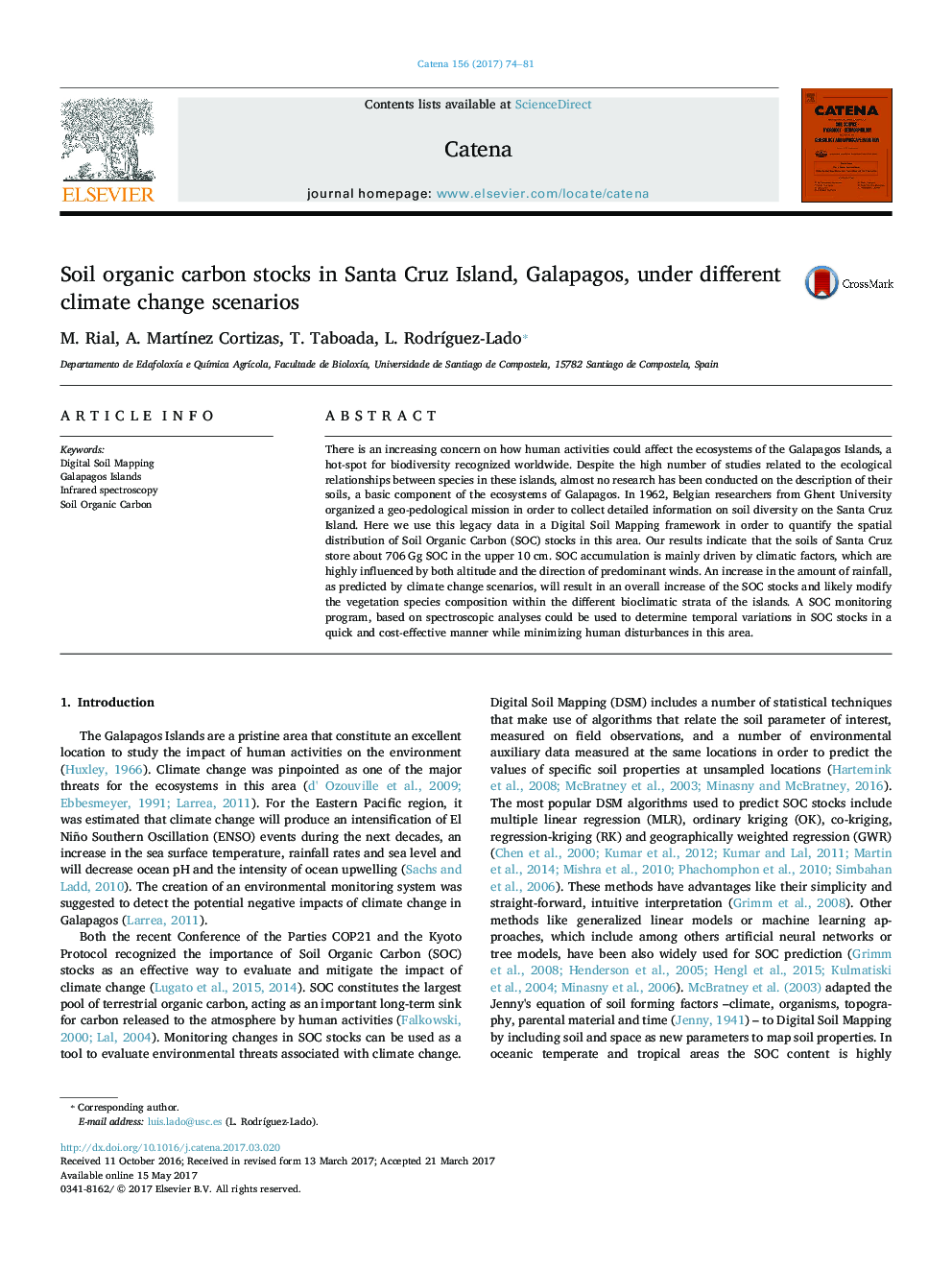| Article ID | Journal | Published Year | Pages | File Type |
|---|---|---|---|---|
| 5769983 | CATENA | 2017 | 8 Pages |
â¢We have used a statistical model to predict the Soil Organic Carbon distribution.â¢Rainfall is the main driver of Soil Organic Carbon accumulation in the study area.â¢Climatic forecasts indicate an increase of Soil Organic Carbon stocks.â¢Infrared data allow to make Soil Organic Carbon predictions in a quickly manner.
There is an increasing concern on how human activities could affect the ecosystems of the Galapagos Islands, a hot-spot for biodiversity recognized worldwide. Despite the high number of studies related to the ecological relationships between species in these islands, almost no research has been conducted on the description of their soils, a basic component of the ecosystems of Galapagos. In 1962, Belgian researchers from Ghent University organized a geo-pedological mission in order to collect detailed information on soil diversity on the Santa Cruz Island. Here we use this legacy data in a Digital Soil Mapping framework in order to quantify the spatial distribution of Soil Organic Carbon (SOC) stocks in this area. Our results indicate that the soils of Santa Cruz store about 706Â Gg SOC in the upper 10Â cm. SOC accumulation is mainly driven by climatic factors, which are highly influenced by both altitude and the direction of predominant winds. An increase in the amount of rainfall, as predicted by climate change scenarios, will result in an overall increase of the SOC stocks and likely modify the vegetation species composition within the different bioclimatic strata of the islands. A SOC monitoring program, based on spectroscopic analyses could be used to determine temporal variations in SOC stocks in a quick and cost-effective manner while minimizing human disturbances in this area.
